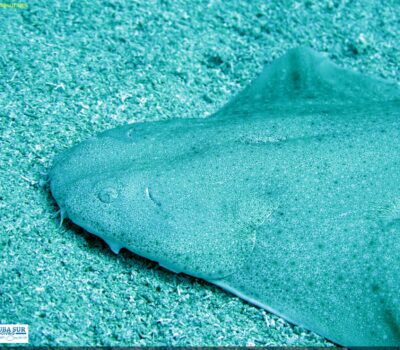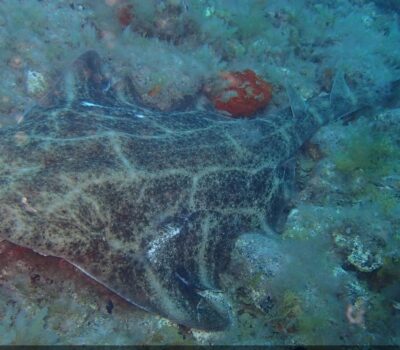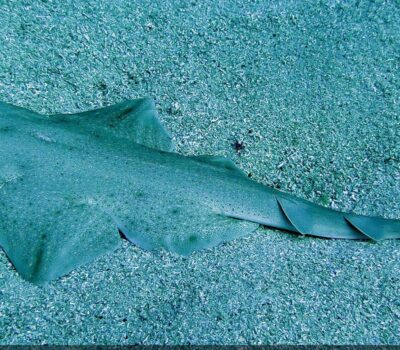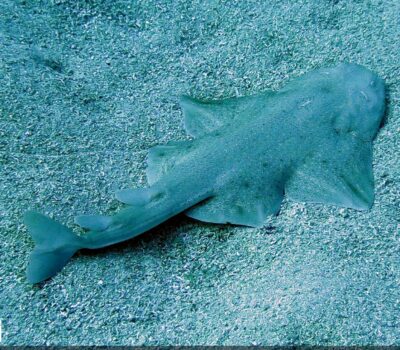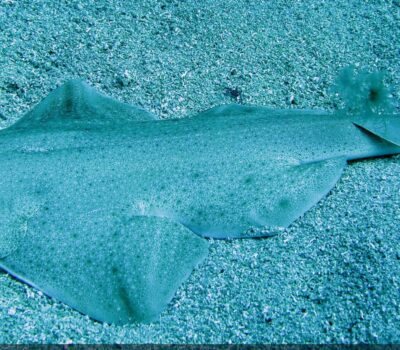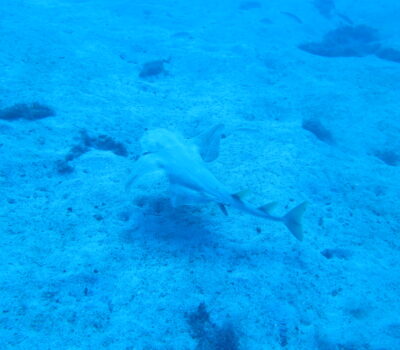From early November till end of March we look out for Angel Sharks
The Angel Shark, also called Squatina Squatina is one of the rare species you find in the waters of Gran Canaria. In the winter, around Christmas, they come close to shore to give birth to their offspring. The shark babies need shallow and protected waters. That is why we only see them in winter time.
The body of an adult Squatina Squatina is covered with black, brown, reddish, grey or greenish sandpaper-like skin. Some even look almost completely white, some have dark splotches and white spots scattered on the back side of the body. Specific coloration provides ideal camouflage on the sandy floor. Angel shark has flat body and large pectoral fins. The underside of an angel shark is usually smooth and white.
Angel Sharks grow to an average of 1,5m long and weigh an average of 35kgs. However some large species , like the Japanese Shark, grow to 2m in length. They live between 25 and 35 years and reach maturity at 10-12 years old.
No danger for divers
They eat flatfishes, skates, crustaceans or mollusks. They spend the day hidden in the sand and rocks of the ocean bed. As such, they are hard to spot. Only a trained eye can see their shape in the sand. As fish swim by, the angel shark bursts up and surprises the prey, catching it in its trap-like jaws. The Squatina Squatina has nine rows of teeth on the top of their jaw and ten rows of teeth on the bottom jaw with a center space that contains no teeth, perfect for catching and eating their prey.
Human related attacks are very rare. Angel shark will attack humans only when provoked. So if you see one, enjoy it but give them their space.
Endangered species
Angel sharks are listed as critically endangered. Since they lie on the bottom of the sea, they are not intentionally being caught but they often get caught in the bottom fishing nets. That is why Scuba Sur is actively participating in the angel shark project by reporting the various sightings.
For more details, have a look in the Angelshark.
